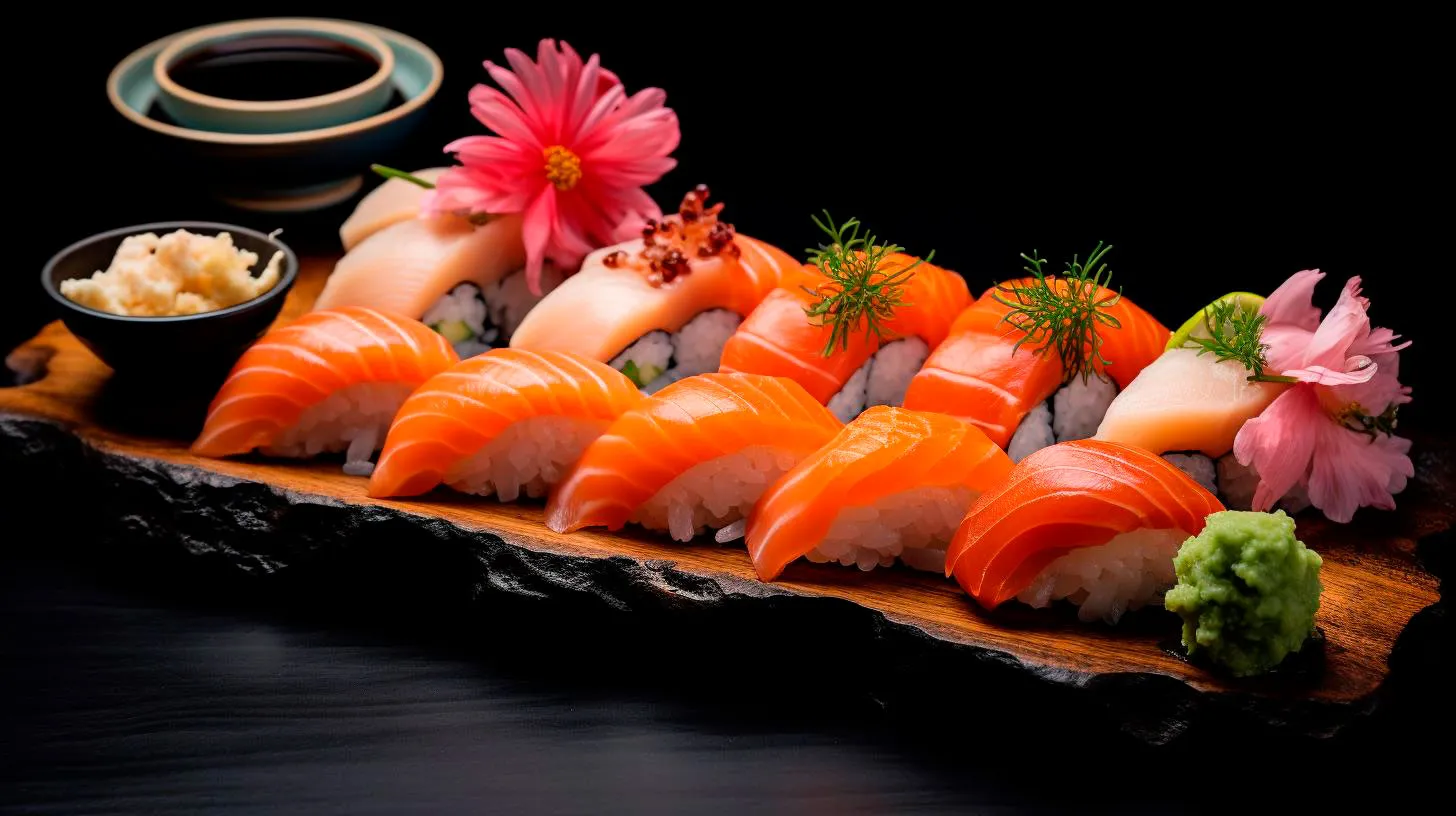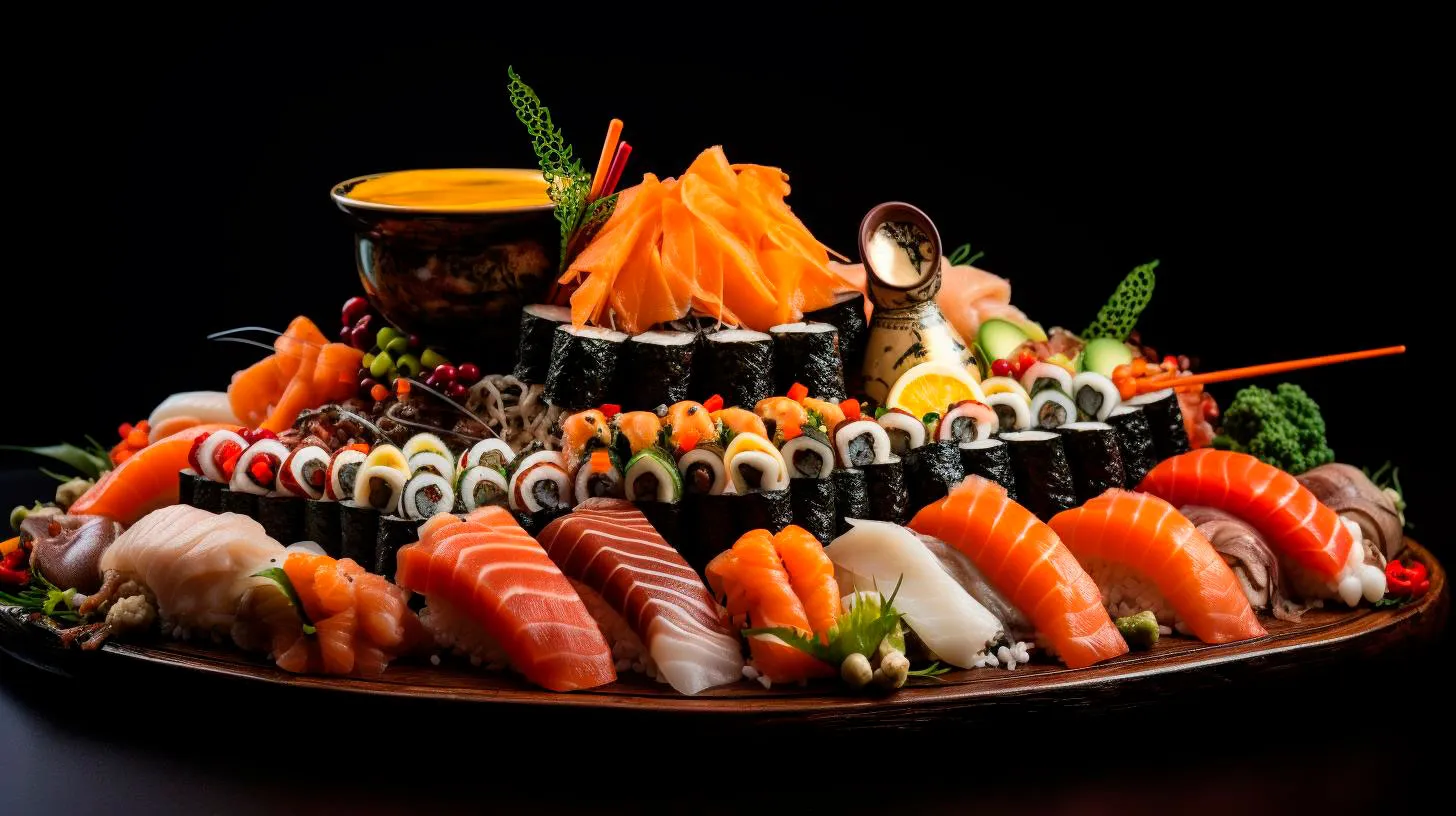The Ritual of Tea: Cultivating Awareness in Japanese Zen Temples
It is a practice that aims to cultivate awareness, mindfulness, and inner tranquility – values that are essential in the quest for a balanced and purposeful life.
The Essence of the Tea Ceremony
The Tea Ceremony, or “Sadō” in Japanese, is more than just a social activity. It is a spiritual and meditative practice that involves the preparation, presentation, and consumption of powdered green tea called matcha. Dating back to the 9th century, this ritual became closely intertwined with Zen Buddhism during the medieval period.
At its core, the Tea Ceremony is about being fully present in the moment. It encourages participants to let go of external distractions and truly immerse themselves in the experience of preparing and enjoying tea. By focusing on every intricate detail – from the way the tea utensils are handled to the placement of each step – practitioners develop a heightened awareness of their surroundings, their actions, and their thoughts.
The Tea Ceremony embodies the key principles of Zen philosophy. It emphasizes the concept of “wabi-sabi,” finding beauty in imperfection and simplicity. The preparation of the tea is deliberately slow, deliberate, and precise, with each movement serving a purpose. This deliberate pace encourages participants to slow down, focus on the present moment, and appreciate the beauty in simplicity.
The Art of Tea Utensils
In the Tea Ceremony, the utensils used play a vital role in creating a harmonious and meditative atmosphere. Each item has been carefully selected for its aesthetic appeal, symbolic meaning, and functionality. Some of the essential utensils include:
- Chawan: The tea bowl is a symbol of unity and togetherness. It is often handmade, celebrating the imperfections that make each bowl unique.
- Chasen: The bamboo whisk is used to whisk and froth the tea. Its fine craftsmanship ensures a smooth and consistent texture.
- Chashaku: The tea scoop is used to measure and transfer the powdered tea into the bowl. It symbolizes precision and attention to detail.
- Kensui: The waste water container represents cleanliness and serves as a reminder to let go of attachments and cleanse the mind.
These utensils, with their deep symbolism and exquisite design, enhance the spiritual experience of the Tea Ceremony. Each item tells a story and encourages participants to reflect on the impermanence of life and the beauty of simplicity.
The Benefits of Tea Ceremony Practice
Engaging in the Tea Ceremony offers a range of benefits for both the mind and body. Here are some key takeaways:
- Cultivating mindfulness: The deliberate and focused nature of the Tea Ceremony trains the mind to stay fully present in the moment. This mindfulness practice can be carried into daily life activities.
- Stress relief: The serene and peaceful environment of a tea room, coupled with the slow-paced ritual, helps to reduce stress and promote relaxation.
- Enhancing focus and clarity: The Tea Ceremony requires attention to detail, promoting mental clarity and sharpening focus.
- Promoting gratitude: The appreciation for the simple act of making and drinking tea encourages a sense of gratitude for the present moment and the beauty of life.
- Creating connections: The communal aspect of the tea ceremony fosters a sense of unity and shared experience, strengthening interpersonal relationships.
Relevance in Today’s World
In our fast-paced and technology-driven society, the practice of Tea Ceremony offers a powerful antidote to the constant distractions and busyness that surround us. It serves as a reminder to slow down, appreciate the beauty in simplicity, and reconnect with our inner selves.
According to a study conducted by the Harvard Medical School, mindfulness practices like the Tea Ceremony can lower stress levels, improve focus, and contribute to overall well-being. Additionally, the global market for tea is booming, with an estimated value of $52.7 billion by 2024, indicating a growing interest in tea-related rituals and traditions.
The Way of Tea
The Tea Ceremony has the power to transport us to a place of calmness and awareness. Through its meticulously choreographed movements, delicate tea utensils, and the shared silence among participants, it offers a gateway to inner peace and tranquility. By embracing the timeless wisdom of this ancient ritual, we can learn to cultivate awareness, mindfulness, and gratitude in our own lives.
Tea Ceremonies: A Meditative Practice within Japanese Zen Temples
Let’s explore the essence of tea ceremonies and their significance within Japanese Zen temples.
The Essence of Tea Ceremonies
Tea ceremonies originated in Japan during the 9th century and have evolved over the centuries as an integral part of Japanese culture. These ceremonies follow precise rituals and protocols, which aim to create a serene and meditative atmosphere. The host, often a skilled practitioner, takes great care in every small detail, from the preparation of the tea to the way it is served and received by the guests.
The essence of tea ceremonies lies in the concept of “ichi-go ichi-e,” which translates to “one time, one meeting.” This philosophical principle emphasizes the importance of cherishing each moment as a unique encounter. Tea ceremonies embody this idea, allowing participants to be fully present and appreciate the simplicity and beauty of the moment.
Significance within Japanese Zen Temples
Tea ceremonies hold a special place within Japanese Zen temples as they align with the core principles of Zen Buddhism. Zen teachings emphasize the practice of mindfulness, meditation, and the cultivation of inner peace. Tea ceremonies provide a practical medium to immerse oneself in these teachings.
Within Zen temples, tea rooms known as “chashitsu” are designed to create a meditative environment conducive to the tea ceremony. These rooms often incorporate elements of nature, such as bamboo and stone, to harmonize with the surroundings. The simplicity and serenity of these spaces enhance the sense of tranquility during the ceremony.
The Meditative Experience
Participating in a tea ceremony can be a transformative experience. Here are some key takeaways:
- Mindfulness: Tea ceremonies encourage participants to be fully present, observing every movement, sound, and flavor with focused attention.
- Balance: The ceremony’s precise rituals emphasize the importance of balance in daily life, teaching participants to find harmony amidst chaos.
- Connection: Tea ceremonies foster a sense of connection between the host and guests, promoting empathy, understanding, and deep human connections.
- Gratitude: The practice of expressing gratitude for the tea, the host, and the moment itself cultivates a deep appreciation for life’s simple pleasures.
Statistics Supporting the Benefits of Tea Ceremonies
Research has demonstrated the positive effects of mindfulness practices on mental and physical well-being. Here are some relevant statistics:
- According to a study published in the Journal of Happiness Studies, individuals who practiced mindfulness techniques, such as those found in tea ceremonies, reported reduced levels of stress and increased life satisfaction.
- A 2018 study published in the Journal of Psychosomatic Research found that participants engaged in mindfulness practices exhibited improved immune system function, leading to better overall health.
- The World Health Organization reports that mental health conditions, such as stress, anxiety, and depression, are on the rise globally, emphasizing the need for stress-reducing practices like tea ceremonies.
The Beauty of Japanese Tea Ceremonies
Tea ceremonies evoke a profound sense of beauty through their simplicity, attention to detail, and the harmony they create. The aesthetics of tea ceremonies are reflected in various aspects:
- Tea utensils: Delicate tea bowls, elegant tea whisks, and beautifully crafted tea scoops showcase Japanese craftsmanship and reverence for art.
- Seasonal elements: Tea ceremonies often incorporate seasonal flowers, such as cherry blossoms in spring or chrysanthemums in autumn, enhancing the connection with nature.
- Calligraphy and poetry: Decorative scrolls displaying calligraphy or poetry add a touch of elegance and contemplation to the tea room.
Embracing the Zen Spirit
Tea ceremonies offer more than a sip of tea; they provide an invitation to embrace the Zen spirit in our daily lives. The meditative qualities of these ceremonies can be integrated into various aspects, promoting well-being and balance. Whether through mindfulness practices, appreciation for simplicity, or cultivating gratitude, the teachings of tea ceremonies resonate far beyond the walls of the tea room.
Tea Zen and the Art of Awakening Consciousness in Japanese Temples
This ancient ritual not only serves as a means to prepare and serve tea but also as a gateway to awakening consciousness and fostering a deeper connection with oneself and the world around us.
The Essence of Tea Zen
Originating in China and later perfected in Japan, Tea Zen represents far more than a simple tea ceremony. It is a way of life, a philosophy centered on mindfulness, grace, and harmony. Through this practice, participants aim to achieve a heightened state of awareness and cultivate an appreciation for the present moment.
Tea Zen is deeply rooted in Zen Buddhism, incorporating elements of meditation, discipline, and simplicity. Each movement is deliberate and purposeful, from the preparation of the tea to the meticulous pouring and serving. The goal is to create a serene experience that brings individuals closer to enlightenment.
The Tea Room: A Sacred Space
The tea room, also known as the chashitsu, is a vital component of the Tea Zen practice. This dedicated space is meticulously designed to create a sense of tranquility and peace. The traditional Japanese architecture, with its low ceilings, tatami mats, and paper screens, promotes an intimate and focused atmosphere.
Entering the tea room, one is greeted with a sense of stillness, encouraging guests to leave their worldly worries at the door. The restrained beauty and minimalistic aesthetics of the teaware and room decor further contribute to the meditative ambiance.
The Ritual of Tea Preparation
The art of preparing tea in the Tea Zen ceremony is a meticulously choreographed dance, with every movement imbued with grace and intention. The utensils used, such as the bamboo tea whisk, tea bowl, and wooden ladle, are carefully chosen for their symbolic meanings and historical significance.
Participants engage in the ritual of cleansing and purifying the utensils, symbolizing the removal of impurities from their own hearts and minds. The tea is then carefully measured, whisked, and poured with the utmost care and attention to detail.
As the tea is served, participants are encouraged to fully immerse themselves in the moment, savoring each sip and appreciating the flavors and aromas. The act of drinking tea becomes a meditative practice, grounding individuals in the present while fostering a deep sense of gratitude.
A Path to Consciousness and Enlightenment
Tea Zen offers numerous benefits for those who practice it regularly. Here are some key takeaways and advantages:
- Mindfulness: Tea Zen encourages individuals to be fully present in the moment, fostering a sense of mindfulness and self-awareness.
- Stress relief: The serene environment and meditative nature of Tea Zen can help reduce stress levels, promoting relaxation and well-being.
- Connection with nature: The ritual of tea preparation often involves using water from a natural source, connecting participants with the earth and its elements.
- Community and social bonding: Tea Zen is often practiced in groups, providing an opportunity for individuals to come together and share a meaningful experience.
- Enhanced focus: The deliberate and meticulous movements required in Tea Zen improve concentration and focus, skills that can be transferred to other areas of life.
Cultivating a Lifestyle of Tea Zen
While the Tea Zen ceremony takes place within the confines of Japanese temples, its principles can be applied to everyday life. Incorporating elements of Tea Zen, such as mindfulness, simplicity, and gratitude, can help individuals cultivate a more conscious and meaningful existence.
Engaging in daily rituals, such as preparing and savoring a cup of tea, can serve as a reminder to slow down, appreciate the world around us, and find joy in the simplest of actions. Embracing the spirit of Tea Zen can bring a sense of tranquility and balance, allowing us to navigate the chaotic modern world with greater clarity and serenity.
Unlock the potential of Tea Zen and embark on a journey of self-discovery and enlightenment through the art of tea.
Tea as a Tool for Mindfulness in Japanese Zen Temples
Let’s delve into the fascinating world of tea as a tool for mindfulness in Japanese Zen temples.
The Essence of the Tea Ceremony
At the heart of the tea practice in Zen temples lies the tea ceremony, also known as “chado” or “sado.” The tea ceremony is not merely about drinking tea but rather a profound ritual that incorporates various aspects of Zen philosophy. The ceremony is meticulously orchestrated, focusing on every minute detail, from the cultivation and preparation of tea to the graceful and deliberate movements of the ceremony’s participants.
The tea ceremony serves as a vehicle for cultivating mindfulness, fostering a deep sense of awareness, and promoting harmony within oneself and with others. The minimalistic beauty of the tea room, the graceful gestures, and the serene environment all contribute to creating a moment of tranquility and introspection.
The Ritual of Preparation
One key aspect of the tea ceremony is the deliberate and mindful preparation of tea. From the careful selection of water and utensils to the precise measurement of tea leaves, every step is performed with utmost attention and reverence. This meticulous approach encourages participants to fully engage in the present moment, leaving no room for distractions.
The act of preparing tea becomes a meditation in itself, a gateway to mindfulness. Focusing on each movement, breath, and sound heightens the perception of the senses, allowing participants to immerse themselves fully in the present moment and let go of external thoughts and worries.
The Art of Tea Drinking
The art of tea drinking in Zen temples is based on principles of simplicity, humility, and gratitude. Guests are encouraged to appreciate every sip of tea, focusing on its aroma, taste, and texture. By embracing the experience with open-hearted curiosity, participants learn to savor the beauty of the moment and find contentment in the simplest things in life.
The act of sharing tea also promotes a sense of connection and harmony among participants. In the serene atmosphere of the tea room, social barriers diminish, and genuine human connections can be formed. By practicing tea drinking mindfully, individuals can cultivate empathy, compassion, and a deeper understanding of themselves and others.
The Benefits of Tea as a Tool for Mindfulness
The practice of tea ceremonies in Japanese Zen temples offers numerous benefits for individuals seeking mindfulness and inner peace. Some key advantages include:
- Promotes mindfulness: The slow and deliberate nature of the tea ceremony brings participants into the present moment, enhancing their awareness and mindfulness.
- Cultivates inner peace: By immersing oneself in the tea ceremony, individuals can find a space of tranquility and calm within themselves, even amidst the chaos of the external world.
- Enhances focus and attention: The practice of paying close attention to every detail in the tea ceremony helps individuals develop sharper focus and concentration skills.
- Reduces stress and anxiety: Engaging in the tea ceremony’s meditative rituals can help reduce stress levels and promote a sense of relaxation and well-being.
- Encourages introspection and self-reflection: The serene ambience of the tea room invites quiet introspection, allowing participants to connect with their inner selves and gain deeper insights.
Key Takeaways
Tea has been used as a tool for mindfulness in Japanese Zen temples for centuries, providing individuals with a profound and transformative experience. By immersing oneself in the art of tea ceremonies, individuals can embrace the present moment, cultivate inner peace, and foster deeper connections with themselves and others. The practice of mindfulness through tea can have lasting effects on one’s overall well-being, bringing a sense of tranquility and harmony even in the midst of a chaotic world.
So, why not take a moment to slow down, brew a cup of tea, and embark on a journey of mindfulness and self-discovery?


